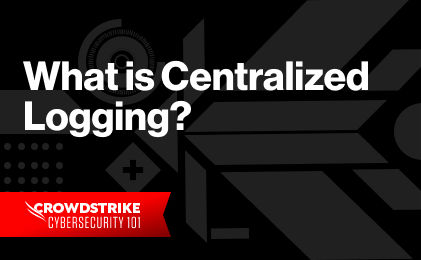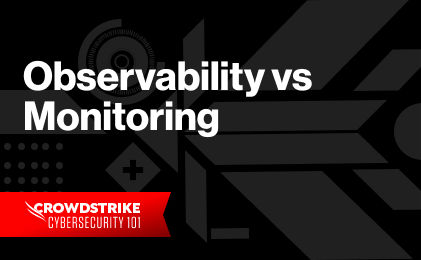One of the most powerful drivers in business today is digital transformation, which has shifted our legacy analog business models to digital forms. Think back to vinyl records and filling out forms with pen and paper — those antiquated concepts have gone digital. And in today’s modern digital business, organizations now have applications composed of an array of distributed services, microservices, and containers running in cloud infrastructure.
Understanding how these systems and the organization’s cloud infrastructure are performing is essential to a company’s success. Enter observability. Observability in IT and cloud computing refers to a set of processes and the associated tools that enable you to collect, aggregate, and correlate real-time data so that you can analyze what’s happening in your environment and achieve better overall service outcomes.
With observability, a company can ensure performance, optimization, and cost efficiency at scale. In cloud environments, DevOps teams use observability to debug their apps and diagnose the root cause of system issues.
What are the three pillars of observability?
The three pillars of observability are logs, metrics, and traces. These three data outputs provide different insights into the health and functions of systems in cloud and microservices environments.
- Logs are the archival or historical records of system events and errors, which can be plain text, binary, or structured with metadata.
- Metrics are numerical measurements of system performance and behavior, such as CPU usage, response time, or error rate.
- Traces are the representations of individual requests or transactions that flow through a system, which can help identify bottlenecks, dependencies, and root causes of issues.
When combined and analyzed together, logs, metrics, and traces can provide a holistic view into systems to help diagnose problems that interfere with business objectives.
1. Logs
Every activity that happens in your applications and systems generates an event log with details that include things like a timestamp, event type, and machine or user ID. Whether written in plain text or binary, structured or unstructured, log data contains text and metadata that provide a level of granularity that’s valuable for debugging and gaining insights into system events and errors. Generating logs is easy. Most languages support event logs out of the box, so you only need to make a few changes to add event logs to your observability system.
At the same time, creating logs can add unneeded system overhead and lead to performance concerns. Though logs let you dig into the details, issues are rarely caused by one event or one component. That's why combining event logs with the other pillars of observability is invaluable for helping you see the “big picture” and gain contextual insights.
2. Metrics
Metrics are quantitative values that assist in analyzing performance across time, providing much-needed insight into your systems and performance. Often, observability metrics are used for:
- Key performance indicators (KPIs)
- CPU capacity insights
- Memory monitoring
- System health and behavior
Metrics can be sampled, summarized, correlated, and aggregated in a variety of ways, revealing information about performance and system health. For example, organizations can monitor real-time metrics and historical data to identify patterns and trends over time intervals. This empowers organizations to establish a baseline of what "normal" performance looks like and set goals for future performance.
Metrics save time because they can be readily correlated across infrastructure components to provide a comprehensive view of system health and performance. They also allow for easier searching and extended data retention.
3. Traces
Although logs and metrics help you understand individual system behavior and performance, they rarely provide helpful information for understanding the lifetime of a request in a distributed system. That’s where traces come in. Traces give you visibility into the complex journey of a request as it crosses through your systems. They’re especially helpful in enabling you to profile and observe systems like containerized applications, serverless architectures, and microservices architectures.
For example, traces shed light on which method or service a certain request traversed before finishing (or crashing). Traces play a crucial role in helping you understand and improve the health of your system. By analyzing trace data, you can gain valuable insights into overall performance, response times, error rates, and throughput as well as identify areas that may be causing bottlenecks or other problems. This information allows you to proactively address potential issues before they impact your users or customer experience.
One of the main considerations with using traces is the sheer volume of data that can be generated by tracing systems. With large-scale applications, the number of traces can quickly become overwhelming, making it difficult to analyze and extract meaningful insights. As such, traces tend to be sampled and not stored for all requests.
Learn More
Read this article to learn what a logging as a service solution helps you achieve and what you need to consider when getting one.
Tools and technologies
It's important to understand the many options available when choosing an observability tool so you can select the one that best meets your organization’s needs. Here are some of the most common types of observability tools:
Individual “point” solutions
Log management tools
Log management tools are useful for gathering and storing log data. Some solutions allow users to inspect logs in real time and create alerts for abnormalities. Log management tools are helpful for organizations that need an effective way to adhere to logging compliance requirements because they provide a quick and efficient way to gather and store information.
Application performance monitoring (APM) tools
APM tools monitor software applications and track the transaction speeds of end users, systems, and network infrastructure to identify performance issues or bottlenecks that may have a negative impact on the user experience. These technologies measure production application performance, allowing users to discover problems and determine their root cause. APM tools are helpful for organizations that have observability requirements narrowly focused on obtaining performance metrics of business-critical applications.
Comprehensive solution
Observability platforms
Unlike individual tools, observability platforms provide organizations with insights and continuous feedback from their systems. A single observability platform that includes all three capabilities — monitoring, logging, and tracing — can deliver a comprehensive picture of the state of an organization’s systems and services from across their infrastructure. With an observability platform analyzing a company’s centralized telemetry data, it increases the data's value and delivers meaningful context for teams to make business-critical decisions across use cases.
Best practices for implementing observability
With an understanding of observability and the value it provides, you can use the list below to implement a perfect solution for your organization. In short, your observability platform should be able to:
- Integrate with all of your systems across each of your application stacks, either natively or through reliable plugins
- Install in an automated, reproducible way
- Capture real-time data from all target components and store, index, and correlate them in a meaningful and cost-effective way
- Provide an overall picture of your complex system in real time
- Support traceability to show exactly where something is going wrong and do this by separating the important information from the noise
- Provide historical trends and anomaly reports
- Show all relevant, contextual data in alerts and reports
- Offer a user-friendly interface while supporting the creation of customized, aggregated reports for different teams
Expert Tip
Read this article to learn logging best practices that can lay the groundwork for a robust and scalable logging infrastructure.
Discover the world’s leading AI-native platform for next-gen SIEM and log management
Elevate your cybersecurity with the CrowdStrike Falcon® platform, the premier AI-native platform for SIEM and log management. Experience security logging at a petabyte scale, choosing between cloud-native or self-hosted deployment options. Log your data with a powerful, index-free architecture, without bottlenecks, allowing threat hunting with over 1 PB of data ingestion per day. Ensure real-time search capabilities to outpace adversaries, achieving sub-second latency for complex queries. Benefit from 360-degree visibility, consolidating data to break down silos and enabling security, IT, and DevOps teams to hunt threats, monitor performance, and ensure compliance seamlessly across 3 billion events in less than 1 second.







